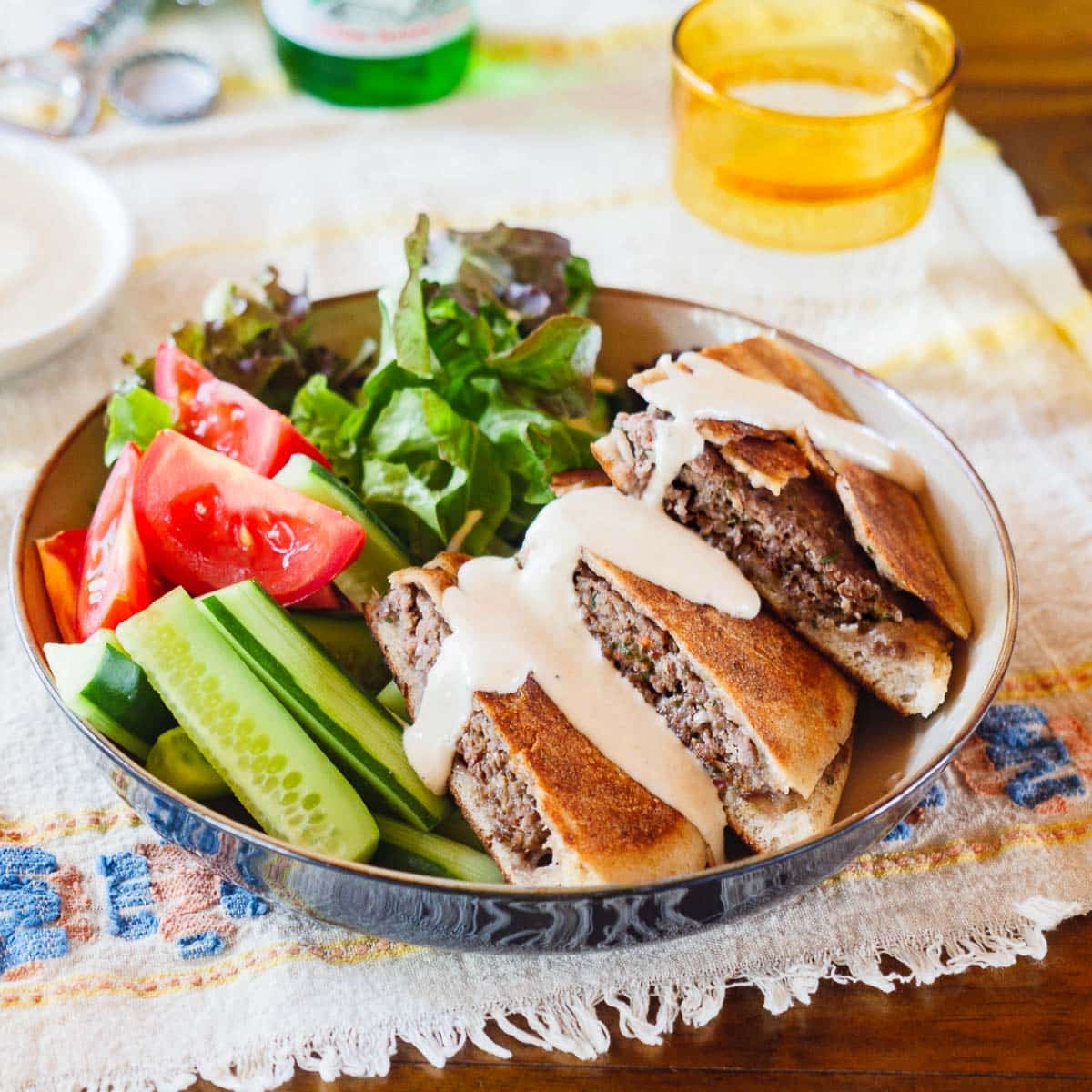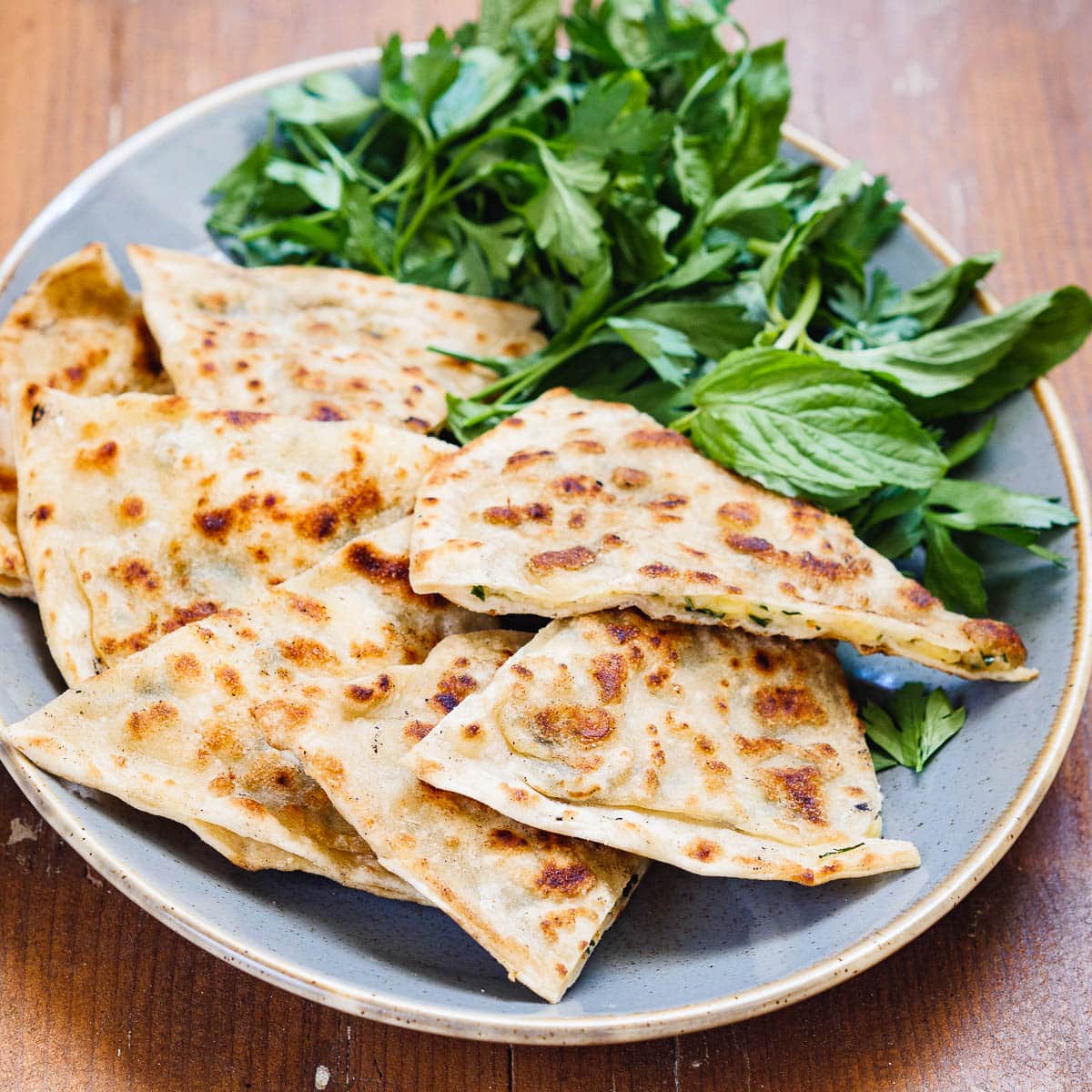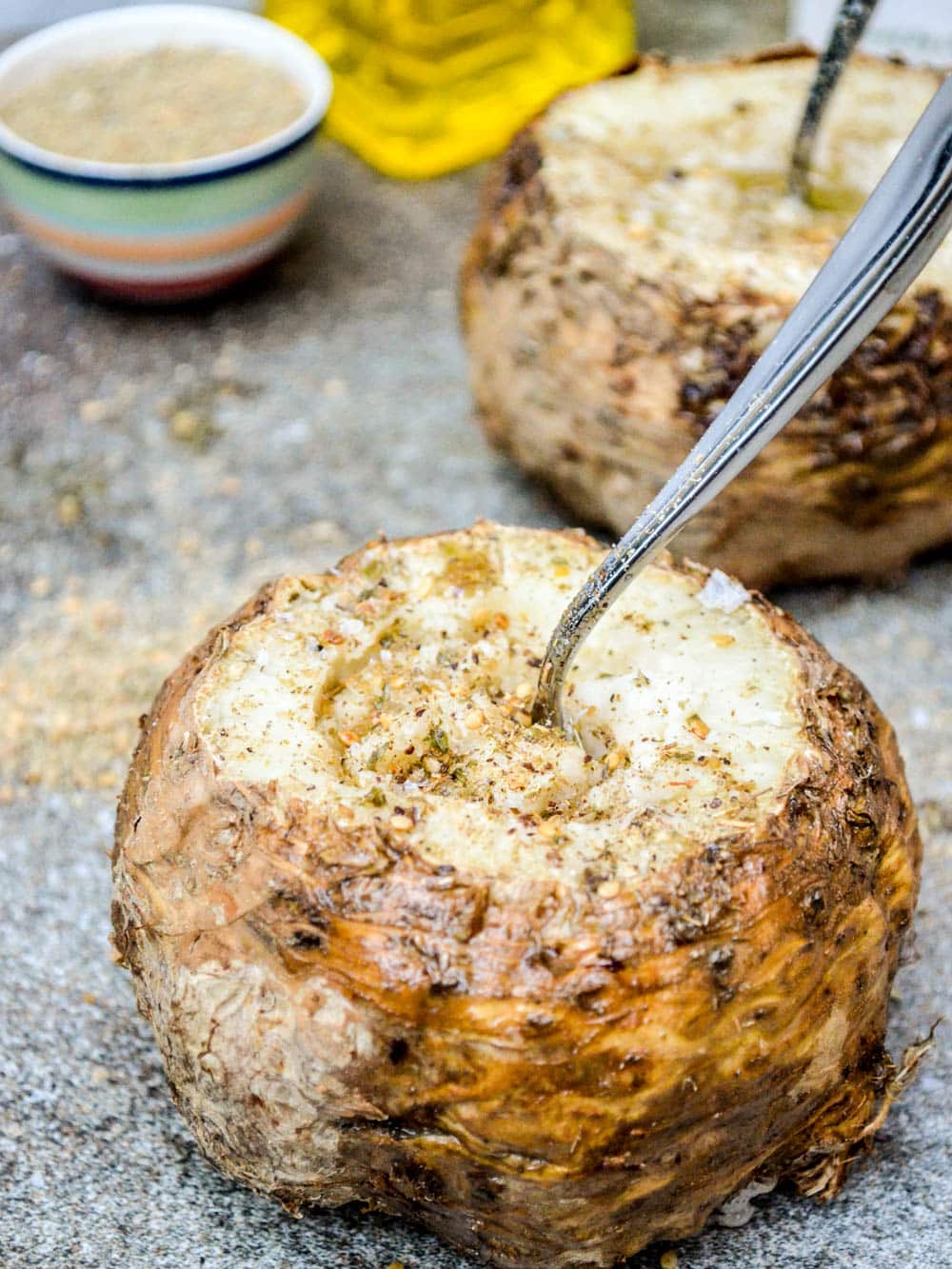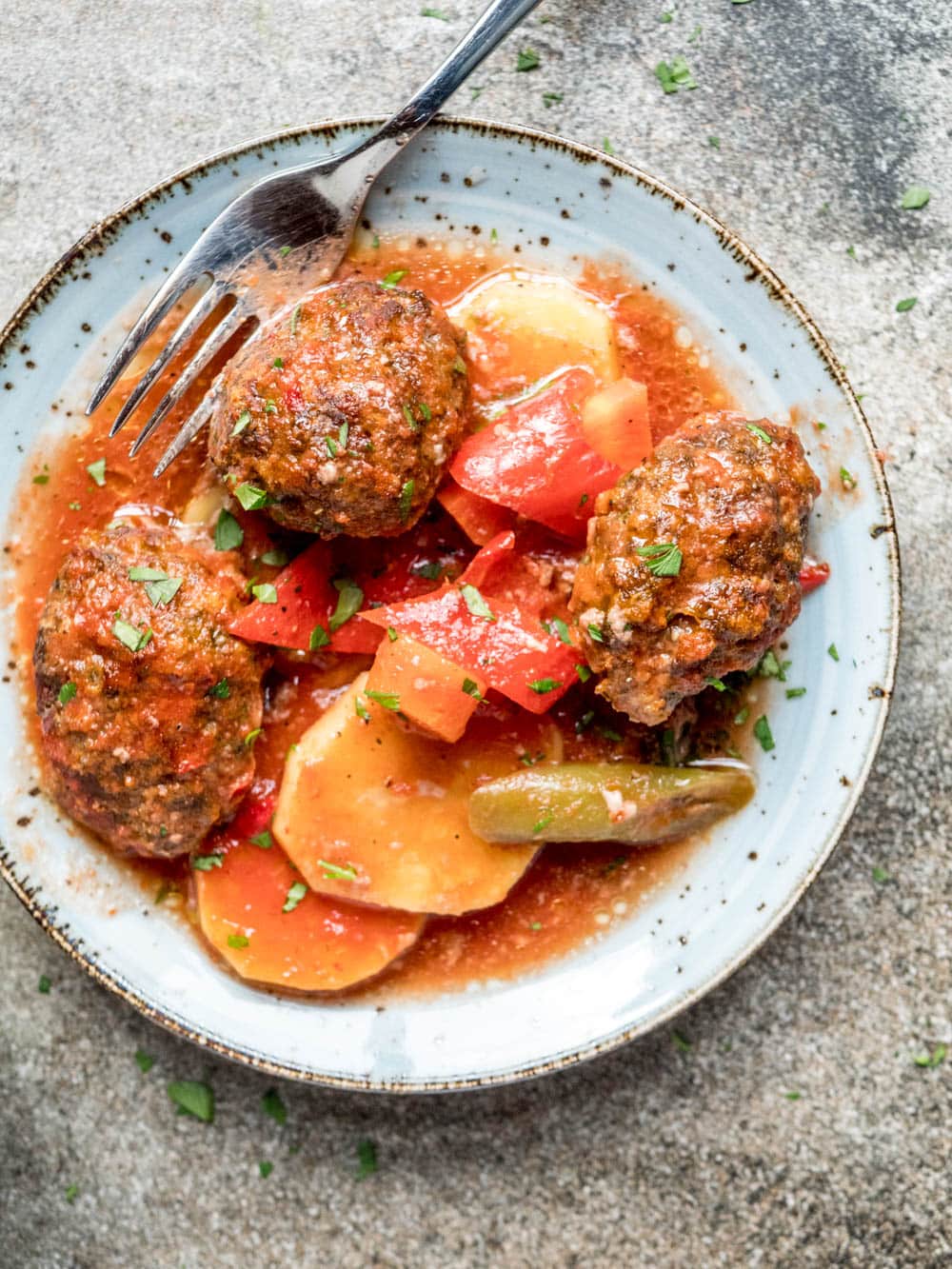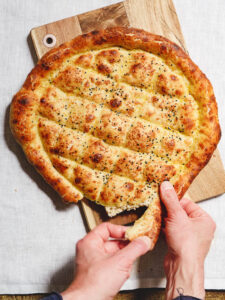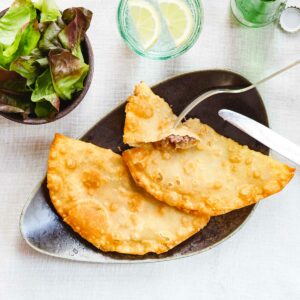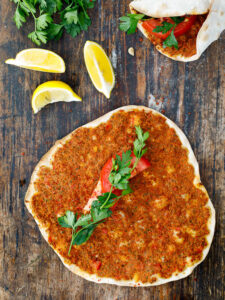Arayes has been part of Levantine food culture for a long time, but it’s only recently it’s become one of the more famous dishes of the region.
What is arayes and where does it come from?
Arayes is a Lebanese dish of pita stuffed with a spiced ground meat mixture. This is the fried, baked or grilled on an outdoor grill until golden brown and – usually – served with tahini sauce. Delicious! And one of my favourite weeknight dinners for sure.
In her seminal book The New Book of Middle Eastern Food, first published in 1968, Claudia Roden writes that arayes is historically most closely linked to Lebanese cuisine. Upon inspecting the ingredient list, this seems fairly obvious. Pita bread, a warming spice mix, tahini sauce. It doesn’t get much more quintessentially Levantine than this!
In Lebanon, arayes was usually served as a hot starter. In our day it’s just as often considered a street food.
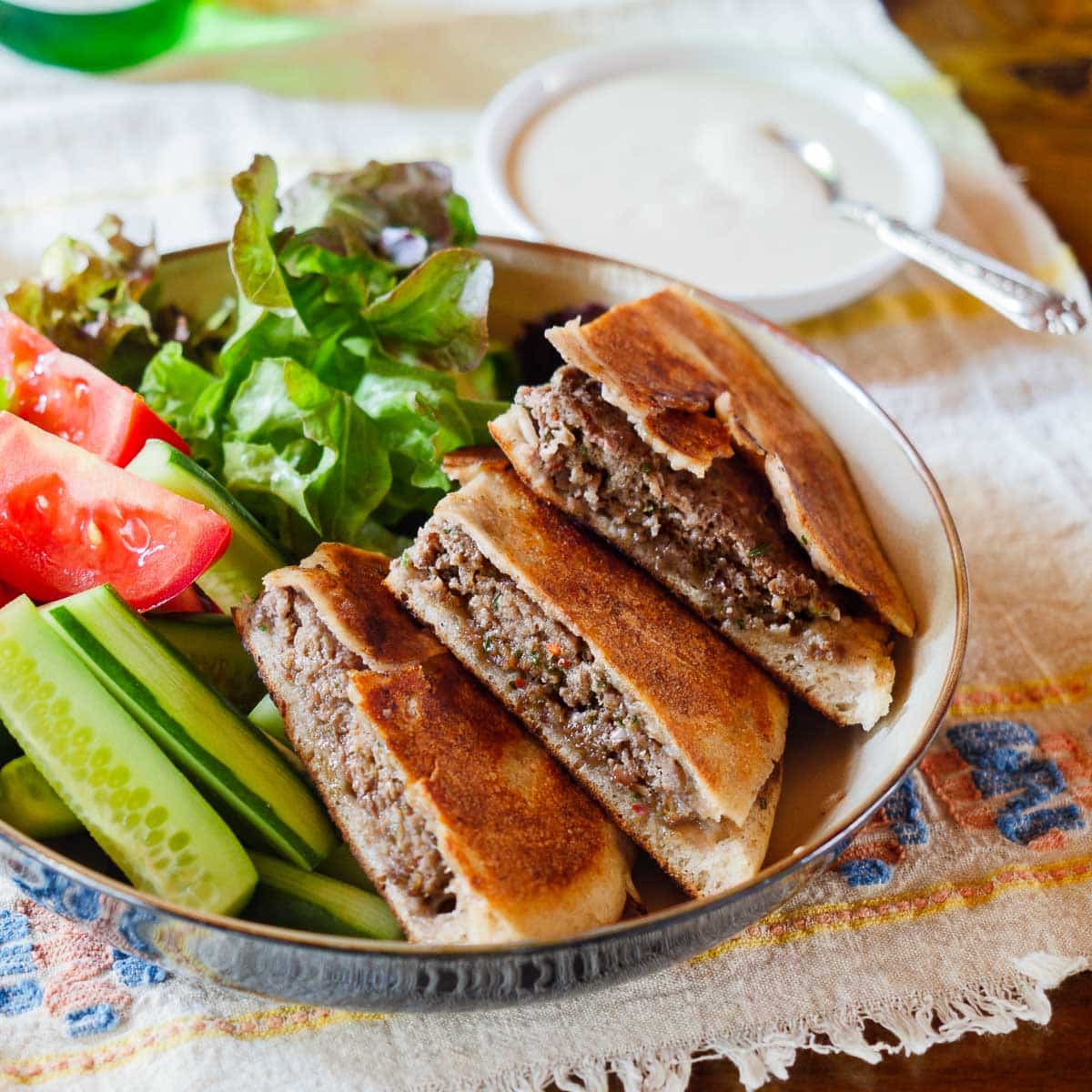
A relatively unknown food outside of Lebanon, arayes shot to modern fame after being picked up by Israelis. First in the northern parts of the country, before spreading to the rest of Israel and the Jewish diaspora across the world.
In fact, virtually every Israeli cookbook author in my shelf offers up a recipe, but almost none of the Levantine cuisine ones. This was also where I first tried arayes, on a trip to Tel Aviv, and later from cookbooks by Israeli authors.
Unfortunately, while Israeli enthusiasm has helped the dish reach a new audience, it’s also erased much of the history of this Lebanese dish in the process. But there you have it!
A few tips for making arayes
Making arayes is quite simple and straightforward, though you have a few choices. You can find my arayes recipe below.
Two ways of making arayes
There are two distinctly different ways of making arayes.
One does as Claudia Roden. This involves frying the ground meat before stuffing it in the pitas. Then the pitas are fried again.
The second way adds stuffs the pitas with a raw meat filling. This means you need to fry the pitas a little longer to ensure the meat is completely cooked through.
I prefer the second method. Not only is it easier, but I also find the end result is juicier, and I don’t miss the caramelisation of fried meat in the final dish.
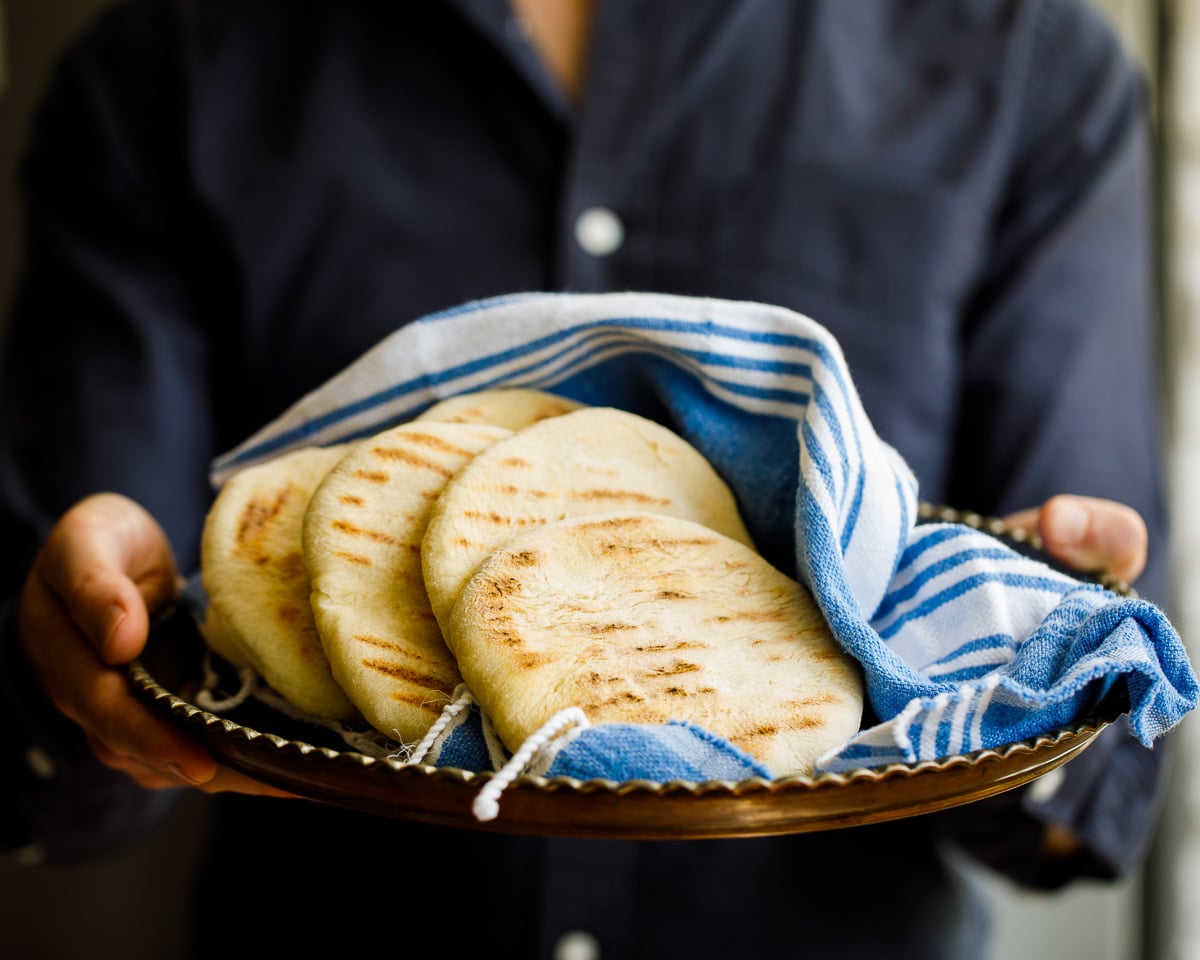
The pita
To avoid the pita falling apart when stuffing, I like to reheat it for a few seconds in the microwave or on a hot pan. This makes it easier to work with.
That said, it doesn’t matter that much if it cracks up in places. Just try to patch it up as well as you can. The meat should hold everything together anyway.
The ground meat mixture
Most arayes recipes call for ground beef, but ground lamb or a combination of the two also work really well.
Once combined, I like to flatten the meat mixture to roughly half the size of the pita before stuffing. Any larger than this, and I find it’s difficult to get into the pita pockets without either breaking up.
I then flatten it as well as I can with my fingers before pressing it in the pan with a large pot. Any large, flat surface will do for this.
How to fry arayes
I usually use a large cast iron pan for frying the arayes, though a non-stick pan also works if you use those. I first brush the pitas with olive oil to ensure a crispy and golden bread surface. Since the stuffing is raw, make sure not to use too high a heat. You should be able to cook the meat through without burning the pita bread.
To help keep the shape and to make sure the meat is spread to all of the corners of the pita pockets, I like to press the arayes down in the initial stages of frying. I use a pot for this, but any heavy-ish, large, flat tool works for this.
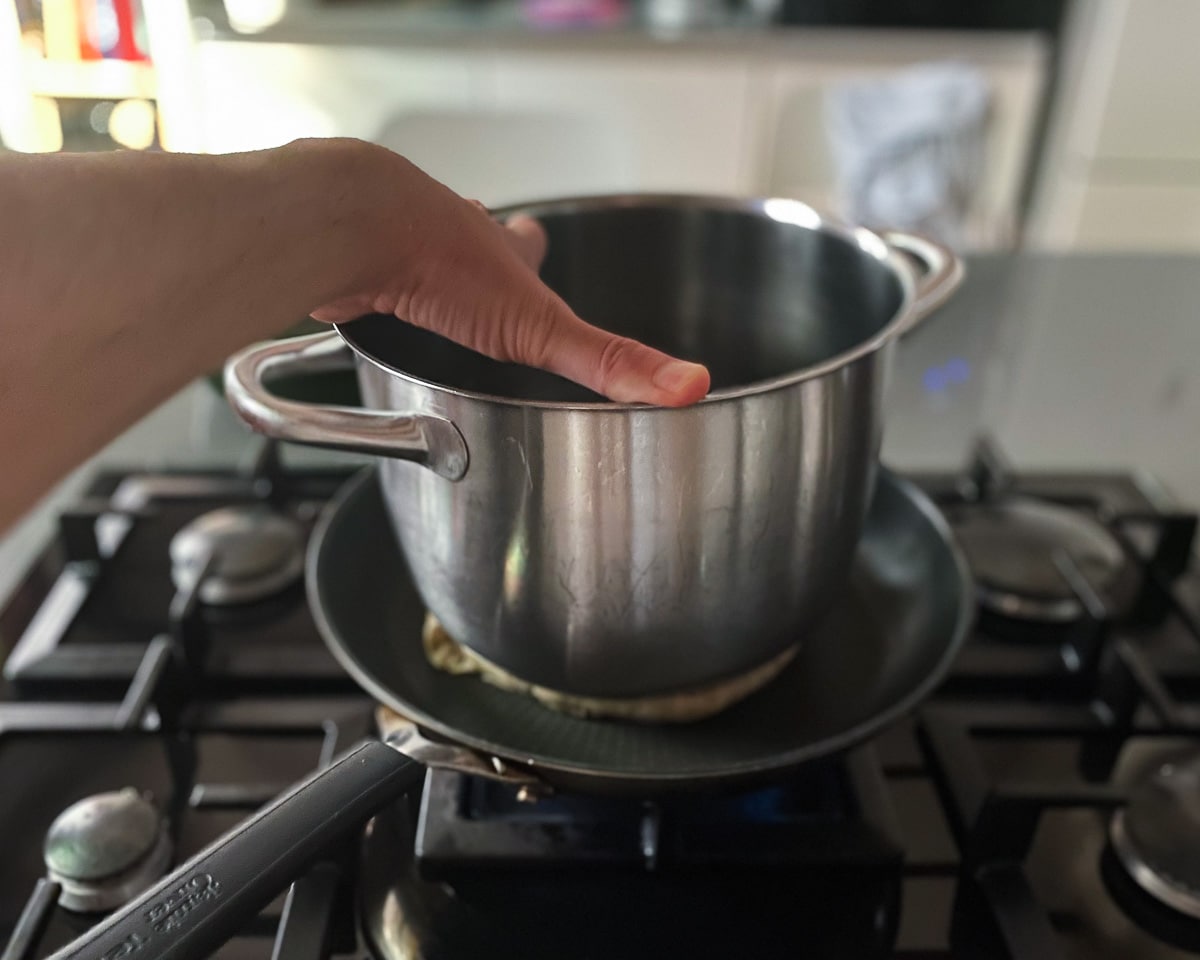
Serving suggestion
According to Claudia Roden, Lebanese restaurants used to serve wedges of arayes as a starter. She does suggest, however, that it also works well as a meal in its own right if served in bigger portions.
If having guests over, arayes are great served in quarters or sixths as a snack or hot meze alongside a few other dishes.
I usually eat arayes as a quick and easy weeknight dinner. If serving as the main dish, you’ll need 1–1½ arayes per person (big eaters will want two).
The tahini sauce is optional, but not really: It really helps elevate the dish to the next level. It comes together in minutes and goes so well with the meat and warming spices. If you don’t like tahini, you could substitute a garlic sauce like Lebanese toum.
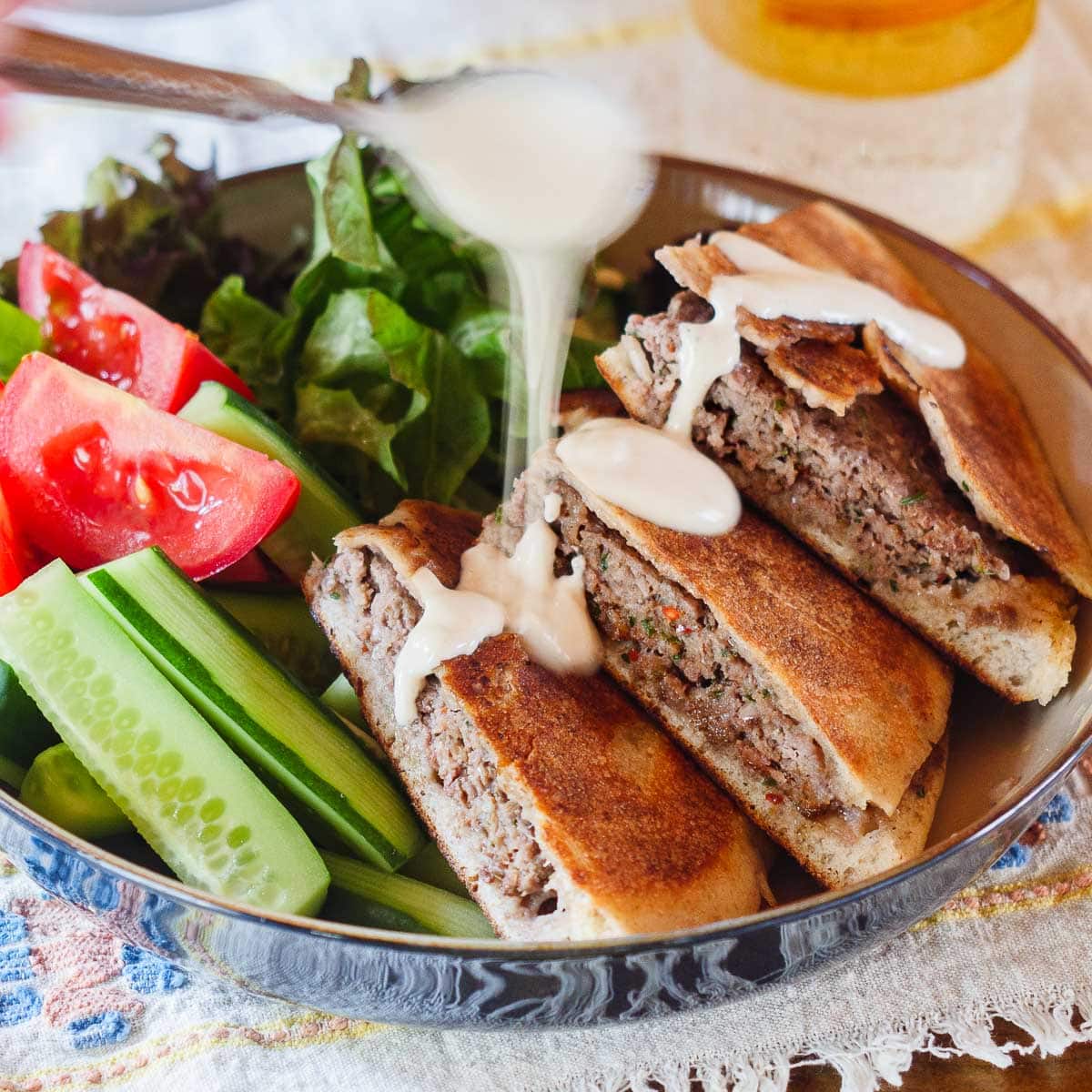
However you serve it, make sure to offer up plenty of fresh salad, cut vegetables or fresh herbs alongside. I like mild green salad leaves, fresh parsley leaves and a couple of seasonal vegetables. Tomato and cucumber (as pictured) in summer, carrot and turnips or beetroots in winter. Drizzle a little pomegranate molasses and
Pickled vegetables are also an excellent side for this dish.
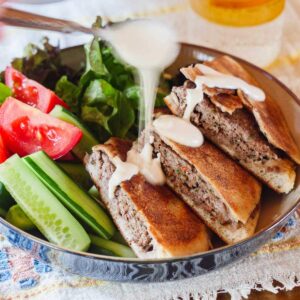
Arayes (Middle Eastern meat stuffed pitas)
Ingredients
- 4 pita breads
- olive oil, for brushing the breads
- fresh salad and vegetables, as desired
Meat filling
- 1 medium onion, quartered
- 2 garlic cloves
- 15 g flat-leaf parsley, (without thick stems)
- 400 g minced beef, or lamb (or a mixture)
- 1½ tsp Lebanese 7-spice, or ground allspice and a pinch of ground cinnamon
- 1 tsp pul biber (Aleppo pepper)
- ½ tsp salt
- ¼ tsp black pepper, freshly ground
Tahini tarator
- 120 g tahini
- 3 Tbsp lemon juice
- c. 100 ml water, scant ½ cup
- 1 garlic clove, finely mashed with a little salt
- ¼ tsp ground cumin
- 2–3 Tbsp finely chopped leaves of flat-leaf parsley, optional
- salt
How I make it
- To make the tahini tarator, combine the tahini and lemon juice. Once thickened, add enough water until you have a consistency slightly thicker than double cream. Add garlic and cumin, then season to taste with salt. Top with flat-leaf parsley (traditional for tahini tarator, but optional for this recipe).
- Add the onion, garlic and flat-leaf parsley to a food processor and chop until finely minced. Alternatively, chop very finely by hand. Add to a bowl together with the remaining ingredients for the meat filling. Mix until well combined. Divide into four equal parts and press into rough flat “burgers” approximately half the size of the pitas.
- Make a slit in the side of each pita bread. Fill with the meat mixture, using your fingers to distribute the mixture evenly throughout the bread. Flatten the filled bread with a saucepan or similar. It’s essential for the bread to be quite flat, otherwise, it’ll take a long time to cook through. Brush the outside with olive oil. Repeat with the remaining pitas.
- Heat a thick-bottomed frying pan over medium/low heat. Place as many arayes as you can fit (usually one or two, depending on the size of your pan). Press them gently down with a saucepan. Fry until golden on both sides and the meat is thoroughly cooked, 3–4 minutes per side. Repeat until you've cooked all of your arayes. If you like, keep warm in a
70 °C oven while preparing later batches.
- Cut each arayes into two or more pieces, depending on whether you serve them as a main course or as a snack or meze. Serve immediately with tahini tarator and salad/vegetables.


